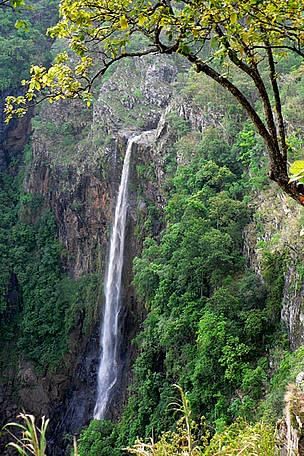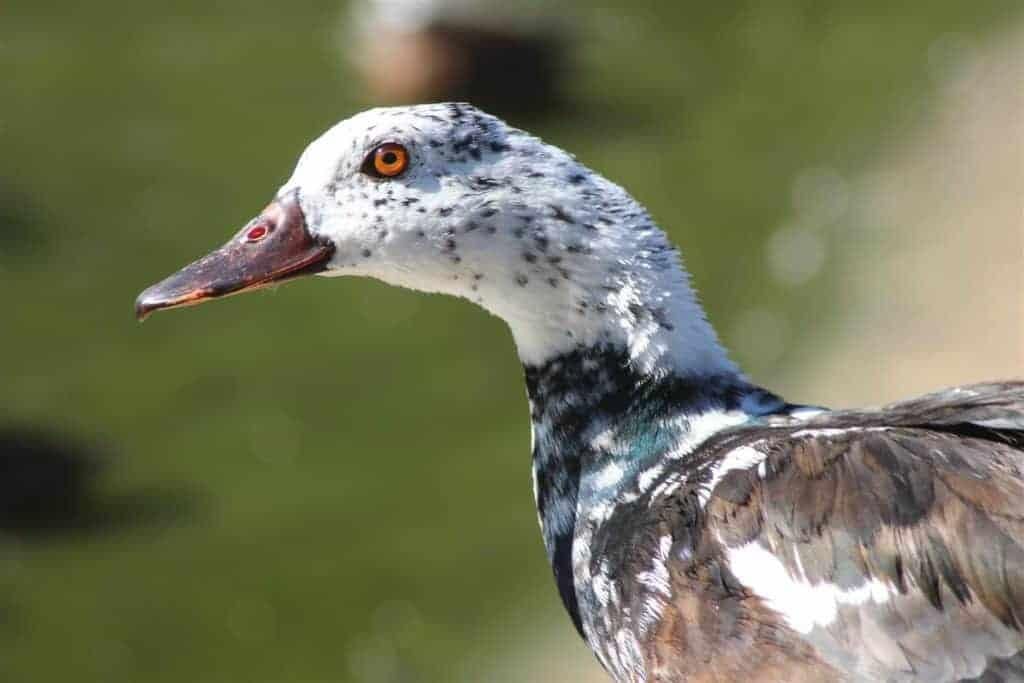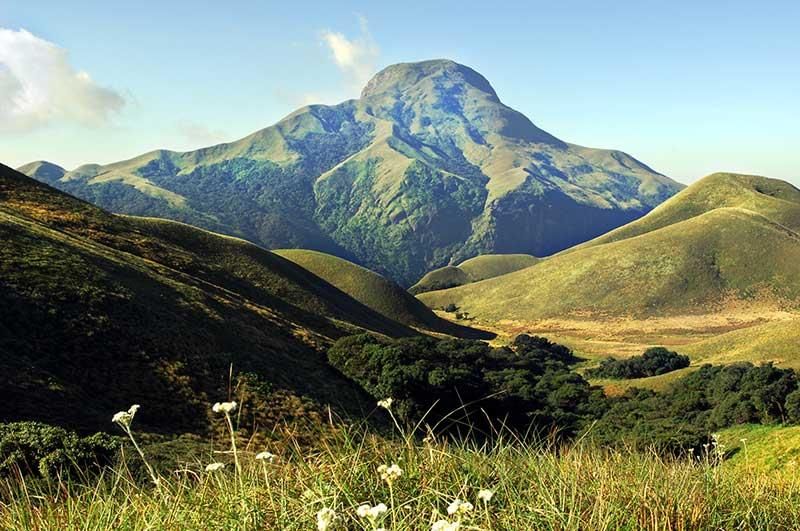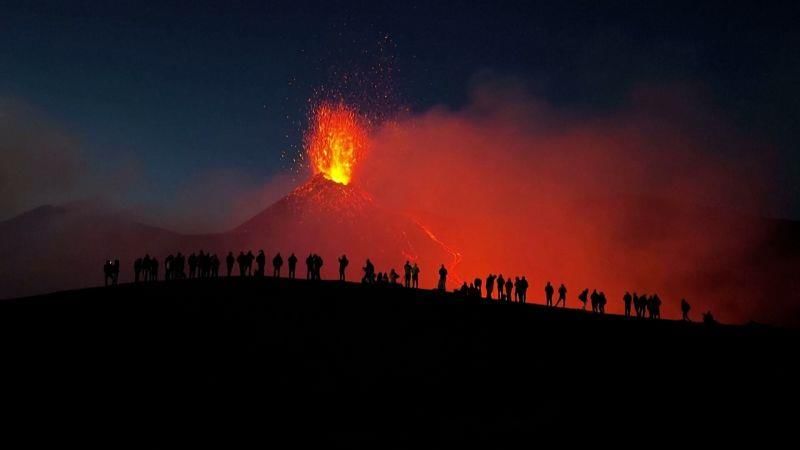UPSC Daily Current Affairs: 16th February 2025 | Current Affairs & Hindu Analysis: Daily, Weekly & Monthly PDF Download
GS3/Science and Technology
What are Colorectal Diseases?
Source: Deccan Chronicle
Why in News?
Medical professionals are expressing concern over the increasing occurrence of colorectal diseases in India.
- Colorectal diseases encompass a variety of digestive conditions affecting the colon and rectum.
- These diseases can be inflammatory, infectious, functional, or cancerous.
- Common conditions include colon and rectal cancer, diverticulitis, and inflammatory bowel diseases (IBD) like Crohn’s disease and ulcerative colitis.
- Symptoms can range from mild to severe and may include recognizable signs such as abdominal pain or rectal bleeding.
Additional Details
- Common Symptoms:
- Abdominal pain
- Blood in stool
- Persistent diarrhea or constipation
- Pain in the rectal or anal area
- Prevention & Public Health Measures:
- Dietary Changes: Adopting a high-fiber diet comprising whole grains, fruits, and vegetables, while reducing red meat intake.
- Lifestyle Modifications: Engaging in regular physical activity, staying adequately hydrated, and avoiding smoking and excessive alcohol consumption.
- Screening & Early Detection:
- Colonoscopy recommended for individuals over 45 years.
- Fecal occult blood test (FOBT) used to detect hidden blood in stool.
- Public Health Initiatives: Programs focused on raising awareness about colorectal cancer screening and lifestyle changes.
Overall, understanding colorectal diseases and their implications is crucial for early detection and effective management, emphasizing the need for public health awareness and preventive measures.
GS3/Environment
Similipal Tiger Reserve
Source: Indian Express
 Why in News?
Why in News?The Similipal Tiger Reserve (STR) has recently made headlines as authorities apprehended six poachers for hunting a mouse deer within the South wildlife division of the reserve. This incident highlights ongoing challenges related to wildlife protection in the region.
- Similipal Tiger Reserve is located in the Mayurbhanj District of Odisha.
- The reserve covers an area of 2,750 square kilometers, featuring notable waterfalls like Joranda and Barehipani.
- STR was established under Project Tiger and has significant historical recognition.
Additional Details
- History: The reserve was designated as a wildlife sanctuary in 1979, later proposed as a National Park in 1980, and was recognized as a Biosphere Reserve by UNESCO in May 2009.
- Geography: It is surrounded by high plateaus and hills, with the highest peaks being Khairiburu and Meghashini, rising to 1,515 meters above sea level.
- Vegetation: The area features a mix of forest types, predominantly Northern tropical moist deciduous forests interspersed with semi-evergreen patches.
- Fauna: The reserve is renowned for its tiger population and is home to 55 species of mammals, 304 species of birds, and various other wildlife, including reptiles and butterflies.
- An impressive diversity of flora includes 1,078 species of plants, with 94 species of orchids documented within the reserve.
The Similipal Tiger Reserve continues to play a vital role in conservation efforts, serving as a crucial habitat for many species and emphasizing the need for ongoing protection against poaching and habitat destruction.
GS2/Governance
NAMASTE Scheme
Source: PIB
Why in News?
The Union Minister for Social Justice and Empowerment recently distributed Personal Protective Equipment (PPE) kits and Ayushman health cards to sewer and septic tank workers as part of the National Action for Mechanized Sanitation Ecosystem (NAMASTE) scheme.
- The NAMASTE scheme aims to formalize and institutionalize the work of individuals engaged in hazardous sanitation.
- It promotes safe, mechanized cleaning through trained sanitation workers and is supervised by two ministries.
Additional Details
- Objective: The NAMASTE scheme's primary goal is to ensure zero fatalities in sanitation work and to ensure that all sanitation tasks are performed by skilled workers.
- Duration: The scheme will be implemented over a period of three years, from FY 2023-24 to FY 2025-26.
- Implementing Agency: The National Safai Karmacharis Finance Development Corporation (NSKFDC) is responsible for executing the scheme under the Ministry of Social Justice and Empowerment.
- Target Groups: The scheme specifically targets sewer and septic tank sanitation workers (SSWs) and waste pickers in urban areas of India.
- Aims:Key aims include:
- No sanitation workers should come into direct contact with human fecal matter.
- Sanitation workers to be organized into Self-Help Groups (SHGs) to empower them in managing sanitation enterprises.
- Provision of alternative livelihoods to all sewer and septic tank sanitation workers (SSWs).
The implementation of the NAMASTE scheme marks a significant step towards improving the working conditions of sanitation workers and ensuring their safety and dignity in the profession.
GS3/Environment
White-Winged Duck
Source: Times of India
 Why in News?
Why in News?A pair of rare and endangered white-winged ducks, known locally as Deo Hanh, was recently spotted in Dihing Patkai National Park by conservationists and forest officials. This sighting highlights the importance of conservation efforts for this species, which is the state bird of Assam.
- The White-Winged Duck is critically endangered and one of the most threatened waterfowl species globally.
- It is primarily found in freshwater wetlands and dense tropical forests across South and Southeast Asia.
Additional Details
- Scientific Name: Asarcornis scutulata, commonly known as the White-Winged Wood Duck.
- Local Name: In Assamese, it is referred to as 'Deo Hans' or spirit duck due to its ghostly call.
- Distribution: The duck prefers dense tropical and subtropical forests with slow-moving rivers, swamps, and wetlands. It is found in various countries including India, Bangladesh, Myanmar, Thailand, Laos, Cambodia, Vietnam, Indonesia (Sumatra), and Malaysia. In India, notable locations include Dibru-Saikhowa National Park, Kaziranga National Park, and the wetlands of Arunachal Pradesh and Assam.
- Physical Features: This duck has a black body and white head, thickly spotted with black, conspicuous white patches on the wings, and striking red or orange eyes. Its average length is about 81 cm, with males being larger and heavier than females.
- The White-Winged Duck is crepuscular, meaning it is most active during dusk and dawn, and it feeds primarily on a variety of food sources, making it largely omnivorous.
- Conservation Status: It is listed as Critically Endangered on the IUCN Red List, emphasizing the need for ongoing conservation efforts.
The sighting of the white-winged duck serves as a reminder of the fragility of biodiversity and the urgent need for conservation initiatives to protect endangered species and their habitats.
GS2/Governance
National Skill Development Corporation (NSDC) Expands Its Skilling Footprint
Source: Indian Express
Why in News?
The National Skill Development Corporation (NSDC) has recently made headlines by announcing the establishment of 50 new future skills centres and 10 international academies. This initiative is part of NSDC's strategic plan to enhance its skilling footprint across India, focusing on advanced skill development and training programs.
- NSDC aims to promote skill development through the creation of quality vocational institutions.
- It will provide funding to enterprises and organizations for skill training initiatives.
- The government holds 49% equity in NSDC, while the private sector holds 51%.
Additional Details
- About NSDC: Established in 2009, NSDC is a not-for-profit company formed by the Ministry of Finance under Section 25 of the Companies Act, 1956. Its primary goal is to catalyze the establishment of vocational institutions that offer quality training.
- Funding and Support: NSDC acts as a catalyst for skill development by providing financial support to various enterprises and organizations involved in skill training. This includes developing effective models to enhance private sector initiatives.
- Equity Structure: The present equity base of NSDC is Rs. 10 Crore, with 49% held by the Government of India through the Ministry of Skill Development & Entrepreneurship (MSDE) and 51% by the private sector.
This expansion initiative by NSDC is expected to significantly bolster skill development across India, contributing to the creation of a skilled workforce essential for the country's economic growth.
GS3/Environment
Anamudi Shola National Park
Source: Times of India
 Why in News?
Why in News?The Kerala Water Authority has recently announced that the National Board for Wildlife (NBWL) has approved the use of 0.0442 hectares of forest land from Anamudi Shola National Park for the construction of a weir across the Silandhi River. This development is likely to raise environmental concerns and potential disputes with neighboring states.
- Anamudi Shola National Park is located in the Western Ghats of Kerala.
- The park is surrounded by several other protected areas, including Eravikulam National Park and Chinnar Wildlife Sanctuary.
- It features diverse vegetation types, including montane wet temperate forests and moist deciduous forests.
Additional Details
- Geographical Significance: Anamudi Shola National Park is part of the Western Ghats, a UNESCO World Heritage Site, known for its rich biodiversity and unique ecosystems.
- Vegetation Composition: The park includes southern subtropical hill forests, which are characterized by a variety of flora such as lichen, mosses, and climbers found in the dense shola woods.
- Diverse Flora and Fauna: The park is home to 174 species of herbs and shrubs, 62 species of trees, and approximately 40 species of climbers, many of which are endemic. Wildlife such as leopards, Indian bison, and elephants can also be found here.
This approval for land use has raised questions regarding the conservation of this ecologically sensitive area, highlighting the ongoing balance between development and environmental protection in Kerala.
GS3/Environment
Mount Etna: Europe's Most Active Volcano
Source: Times of India
 Why in News?
Why in News?Mount Etna, recognized as Europe’s tallest and most active volcano, has once again erupted, resulting in significant lava flows and thick clouds of ash rising into the atmosphere. This event highlights the ongoing volcanic activity and its implications for surrounding areas.
- Mount Etna, also known as 'Aetna', is located on the eastern coast of Sicily in the Metropolitan City of Catania.
- It is an active stratovolcano positioned above the convergent plate boundary between the African and Eurasian tectonic plates.
- As one of the most active volcanoes globally, it is the highest peak in Italy and one of the tallest active volcanoes in Europe.
- The volcano covers an area of 1,190 square kilometers with a base circumference of 140 kilometers.
- Due to its frequent eruptions and proximity to populated areas, it has been designated as a Decade Volcano by the United Nations.
- Mount Etna is also recognized as a UNESCO World Heritage Site.
Additional Details
- Geographical Importance: Mount Etna is located at a critical geographical point where the African and Eurasian plates meet, contributing to its high levels of volcanic activity.
- The recent eruptions have disrupted travel in Sicily, underlining the impact of natural disasters on human activity and infrastructure.
In summary, Mount Etna's eruptions serve as a reminder of the dynamic nature of our planet and the ongoing geological processes that shape our environment. Its status as a UNESCO World Heritage Site emphasizes the need for monitoring and understanding such natural phenomena.
GS1/History & Culture
Sarojini Naidu: A Trailblazer in Indian History
Source: The Tribune
Why in News?
February 13th is celebrated annually in India as National Women's Day, honoring the birth anniversary of Sarojini Naidu, a significant figure in India's history.
- Sarojini Naidu was born on February 13, 1879, and was renowned as a poet, freedom fighter, and politician.
- She is often referred to as the "Nightingale of India" due to her beautiful and lyrical poetry.
- Naidu played a crucial role in the Indian independence movement and was associated with prominent leaders such as Gandhi and Nehru.
Additional Details
- Role in India’s Independence Movement:
- Participated in the Congress session in Bombay in 1904.
- Was the first Indian woman to preside over the Indian National Congress at its 40th session in 1925, held in Kanpur.
- Actively involved in the Non-cooperation movement, Home Rule movement, and the Salt Satyagraha.
- In 1917, she led the All-India Women’s Deputation to advocate for women’s suffrage before E. S. Montagu, then Secretary of State for India.
- Co-founded the Women's India Association with Annie Besant and others in the same year.
- Contribution to Constitution Making:
- Appointed to the Constituent Assembly from Bihar, where she emphasized the significance of adopting a national flag.
- Served as the Governor of Uttar Pradesh from August 15, 1947.
- Key Writings:Some of her notable works include:
- The Golden Threshold
- Bird of Time
- The Broken Wing
- The Feather of the Dawn
- She also authored Mahatma Gandhi: His Life, Writings and Speeches and Words of Freedom: Ideas of a Nation.
Sarojini Naidu's contributions to literature and her pivotal role in India's struggle for independence make her a celebrated figure in Indian history. Her legacy continues to inspire generations in the pursuit of equality and freedom.
GS2/Polity
Proposed Immigration Law
Source: Hindustan Times
Why in News?
The Union Ministry of Home Affairs is planning to introduce the Immigration and Foreigners Bill, 2025, during the Budget session which starts on March 10. This extensive legislation aims to consolidate and modernize India's immigration framework by repealing four existing laws.
- The Bill aims to streamline and improve the immigration process in India.
- It seeks to repeal outdated laws that are inefficient and overlapping.
- New provisions will enhance national security and regulatory control.
Additional Details
- Need for a New Law: The current framework is governed by four outdated laws: the Foreigners Act of 1946, the Passport (Entry into India) Act of 1920, the Registration of Foreigners Act of 1939, and the Immigration (Carriers’ Liability) Act of 2000. Most of these laws were enacted during pre-Constitution times and do not effectively address contemporary immigration challenges.
- Objectives of the Bill:
- Avoid Multiplicity of Laws: The Bill aims to streamline regulations related to passports, visas, and foreigner registration.
- Ensure Efficient Immigration Management: It establishes clear provisions for the entry, exit, and movement of foreigners.
- Strengthen National Security: Improved regulatory controls over visa issuance and foreigner registrations are a priority.
- The Bill will merge existing laws into a single framework, defining the roles of Immigration Officers and the Bureau of Immigration (BoI), thus providing a legal basis for immigration functions.
- Responsibilities of Institutions: Educational and medical institutions that admit foreign nationals will have defined obligations, enhancing compliance with immigration laws.
- Carrier Liability: The Bill strengthens provisions regarding the responsibility of carriers, such as airlines, to ensure compliance with immigration laws.
- The Bill also retains the 'Burden of Proof' clause, where the individual must prove their status if questioned by authorities.
- Expanded Grounds for Denial of Entry: New grounds for refusing entry or stay will include threats to national security, public health concerns, and impacts on foreign relations.
- The Central Government will be empowered to issue removal orders for foreign nationals and delegate powers to relevant authorities.
- Detection and Deportation: The responsibility for identifying and deporting undocumented migrants will lie with State police, given the absence of a federal police force for this purpose.
- e-FRRO Portal: An online system will track foreigners violating visa rules, facilitating better monitoring and compliance.
This comprehensive approach aims to modernize India's immigration system while enhancing national security and operational efficiency.
GS3/Environment
Conservation Efforts for Hangul Deer
Source: Hindustan Times
Why in News?
Recent research from the CSIR-Centre for Cellular & Molecular Biology (CCMB) emphasizes the necessity of reducing human disturbances during the mating and birthing periods of the Hangul Deer to facilitate their population recovery in the Himalayas.
- The Hangul Deer, also referred to as the Kashmir stag, is a subspecies of Central Asian red deer.
- It is critically endangered and requires specific conservation measures to survive.
- Minimizing human interference during key life stages is crucial for their recovery.
Additional Details
- Habitat: The Hangul Deer is primarily found in dense riverine forests in the high valleys and mountains of Jammu and Kashmir, as well as northern Himachal Pradesh.
- Appearance: This large deer species is characterized by impressive antlers in males, while females lack horns.
- The main population resides in Dachigam National Park, which offers them protection; a smaller group is also found in the Overa-Aru Wildlife Sanctuary.
- Social Structure: The Hangul Deer exhibits a matriarchal society, where females lead the groups and select mating partners.
- Breeding Season: The breeding occurs between September and October, marked by males competing for females through roaring, fighting, and displaying their antlers.
- Conservation Status: The Hangul is classified as Critically Endangered by the IUCN and is listed in CITES Appendix I.
In conclusion, the Hangul Deer is a vital species in the Himalayan ecosystem, and targeted conservation efforts are essential for its survival. By understanding their breeding patterns and social structures, effective measures can be implemented to ensure their population recovers.
GS3/Environment
Gulf of Eilat
Source: Nature
Why in News?
A recent study has uncovered that the coral reefs in the Gulf of Eilat underwent an unexpected cessation in growth, lasting approximately 3,000 years, from around 4,400 years ago until about 1,000 years ago. This phenomenon is believed to have been triggered by a temporary decline in sea levels, potentially due to global cooling events.
- The Gulf of Eilat, also known as the Gulf of Aqaba, is a northeastern extension of the Red Sea.
- This region is situated along the southeastern edge of the Arabian Peninsula and is bordered by four countries: Israel, Jordan, Egypt, and Saudi Arabia.
Additional Details
- Geography: The northern part of the Red Sea is divided by the Sinai Peninsula into the Gulf of Aqaba to the east and the Gulf of Suez to the west.
- Significance: The Gulf of Eilat is part of the East African Rift System, formed through seismic activities along the Afro-Syrian Rift, and it is known for its unique and diverse aquatic ecosystems.
- Tiran Strait: This strait links the Gulf of Aqaba with the Red Sea and acts as a vital connection point between Asia and Africa.
- Major cities located at the northern end of the Gulf of Aqaba include Taba in Egypt, Eilat in Israel, and Aqaba in Jordan.
In summary, the Gulf of Eilat plays a crucial role in supporting some of the world's richest coral reefs and diverse marine life, making it an important area for both ecological study and conservation efforts.
|
63 videos|5408 docs|1146 tests
|
FAQs on UPSC Daily Current Affairs: 16th February 2025 - Current Affairs & Hindu Analysis: Daily, Weekly & Monthly
| 1. What are the common types of colorectal diseases? |  |
| 2. What are the risk factors associated with colorectal diseases? |  |
| 3. How can colorectal diseases be diagnosed? |  |
| 4. What are the treatment options available for colorectal diseases? |  |
| 5. How can colorectal diseases be prevented? |  |





















